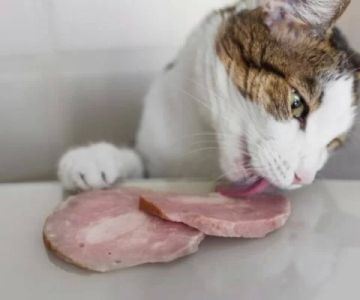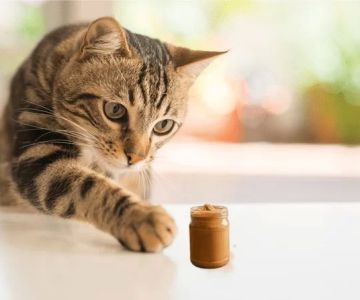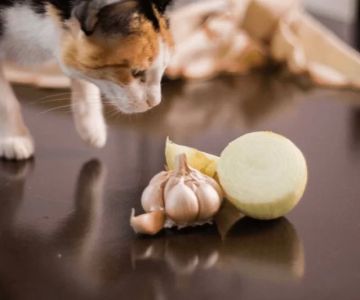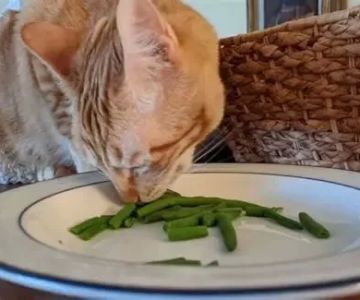Can Cats Eat Raw Salmon? Risks and Benefits Explained
As a cat owner, I know how easy it is to spoil our furry friends with treats, especially when we’re indulging ourselves with delicious meals. One treat that might come to mind is raw salmon. After all, salmon is a popular and nutritious fish for humans, packed with omega-3 fatty acids and proteins. But when it comes to feeding our cats raw salmon, is it really safe? Can cats eat raw salmon without any issues? In this article, we’ll explore the risks and benefits of feeding raw salmon to cats, along with expert advice on how to make this decision for your pet.
1. What Makes Salmon Nutritious for Cats?
Salmon is known for its high nutritional value, especially for humans. For cats, it provides essential proteins and healthy fats, including omega-3 fatty acids. These omega-3s are crucial for maintaining a healthy coat, supporting brain function, and reducing inflammation in the body. As a cat owner, I’ve noticed that when I occasionally give my cat small amounts of salmon, her coat looks shinier and her energy levels seem to improve.
Salmon is also rich in vitamin B12 and potassium, both of which contribute to your cat’s overall health. However, these benefits come with a catch when it comes to feeding raw fish—let’s take a deeper look into the potential concerns of feeding raw salmon to cats.
2. Potential Risks of Feeding Raw Salmon to Cats
While raw salmon can be beneficial in moderation, it’s important to understand the risks associated with feeding your cat raw fish. Here are some of the most significant concerns:
2.1. Parasites and Bacteria
One of the most significant risks of feeding raw salmon to cats is the potential for parasites and bacteria. Raw fish, including salmon, may harbor harmful organisms like tapeworms, salmonella, and Vibrio bacteria. These can cause gastrointestinal upset, vomiting, diarrhea, and more severe health issues in cats.
As a precaution, I always make sure that if I ever offer my cat any fish, it’s thoroughly cooked to kill any harmful organisms. Even though some people believe that raw fish is a natural part of a cat’s diet, the risks far outweigh the benefits in many cases.
2.2. Thiaminase Enzyme in Raw Salmon
Another concern with feeding raw salmon to cats is the presence of thiaminase, an enzyme that destroys thiamine (vitamin B1). Thiamine is essential for a cat’s nervous system and overall health. When a cat consumes too much raw fish that contains thiaminase, it can lead to thiamine deficiency, which can result in neurological problems, seizures, and even death if left untreated.
Thiaminase is found in raw fish, including salmon, and is not destroyed through the freezing process. Cooking the fish eliminates this enzyme, making cooked salmon a safer option for your cat if you want to treat them to some fishy goodness.
2.3. Bones in Raw Salmon
Like many types of fish, raw salmon contains small bones that can pose a choking hazard or cause injury to your cat’s digestive system. Even though salmon bones are generally softer than those of other fish, they still present a risk of getting lodged in your cat’s throat or causing an internal injury. When I’ve given my cat cooked salmon in the past, I always make sure to carefully remove all bones to ensure her safety.
3. Is It Safe to Feed Your Cat Cooked Salmon?
Now that we’ve looked at the potential dangers of feeding raw salmon to cats, what about cooked salmon? Can cats eat cooked salmon? The answer is yes—cooked salmon is much safer than raw fish. When cooked, the harmful bacteria and parasites in raw salmon are killed, and the thiaminase enzyme is deactivated. As a result, you can safely offer your cat cooked salmon as an occasional treat.
To safely feed your cat cooked salmon, here are some guidelines that I follow:
- Always remove the bones before serving the salmon to your cat.
- Do not season the salmon with garlic, onion, or other spices, as these can be toxic to cats.
- Cook the salmon thoroughly to ensure that all harmful bacteria and parasites are eliminated.
- Offer small portions of cooked salmon as a treat, not as a regular part of your cat’s diet.
In my experience, my cat enjoys cooked salmon as a special treat, and she thrives when I keep it in moderation as part of her varied diet. Just like with any treat, it's important not to overdo it and to ensure that her regular diet remains balanced and nutritionally complete.
4. What About Salmon Oil for Cats?
If you want to provide the benefits of omega-3 fatty acids without the risks associated with raw fish, salmon oil is an excellent alternative. Salmon oil is often used as a supplement for cats to improve their coat, skin, and overall health. I’ve used salmon oil for my cat as part of her daily routine to support her joint health and shiny coat.
Salmon oil is generally safe for cats, but it’s important to choose high-quality oil and follow the recommended dosage to avoid overfeeding. Always check with your vet before adding any supplement to your cat’s diet, especially if your cat has any health conditions.
5. Alternatives to Raw Salmon for Cats
If you’re concerned about the risks of raw salmon, there are many other safe alternatives that you can offer your cat. Some of the best options include:
- Cooked chicken – A great source of lean protein and easy to digest.
- Tuna (canned in water, without added salt) – A tasty treat, but should be given in moderation due to mercury content.
- Turkey – Another lean meat that cats love, packed with nutrients.
- Commercial cat treats – Many cat treats are formulated with fish or salmon, offering the taste your cat loves without the risks of raw fish.
When introducing any new food to your cat’s diet, remember to do so gradually and in moderation to ensure they don’t have any adverse reactions.
6. How to Safely Serve Salmon to Your Cat
If you choose to offer your cat cooked salmon, here’s a quick guide on how to serve it safely:
- Remove the bones completely.
- Cook the salmon without seasoning or oil.
- Cut the fish into small, bite-sized pieces for easy consumption.
- Offer it as an occasional treat, not a regular part of their diet.
By following these steps, you can safely treat your cat to a little bit of salmon without worrying about the risks associated with raw fish.












